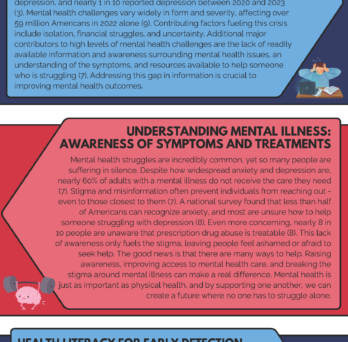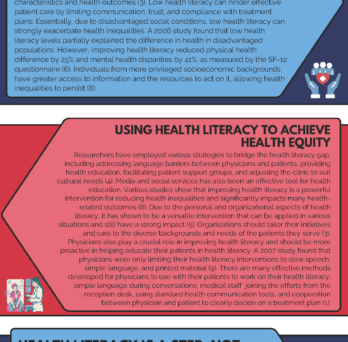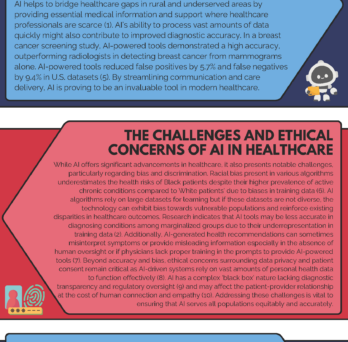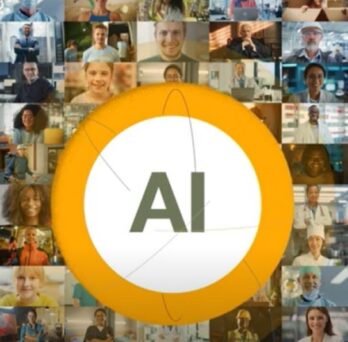Advancing the scientific base of health literacy and helping the public, health care providers, and organizations understand the importance of health literacy.
The U.S. Department of Health and Human Services (HHS) found that only 14% of the U.S. population has proficient health literacy (HHS, 2021). As a result of the COVID-19 pandemic, the CDC and HHS has declared that low rates of health literacy is a public health crisis that impacts an individual’s ability to understand and make informed health decisions pertaining to vaccines and masking (CDC, 2022; HHS 2021).
Health literacy needs to be recognized nationally, and while it is one piece of a complicated health care system, this office aims to raise awareness of this issue and make an impact in the health care system.
Office of Health Literacy Focus Areas Heading link
Together with county, state and global entities, the Office of Health Literacy aims to:
- Reduce health disparities, promote health equity and prevent chronic illnesses in socioeconomically diverse communities.
- Educate students and healthcare providers in literacy- and wellness-promoting strategies.
- Attract next-generation healthcare workers from diverse backgrounds.
Defining Health Literacy Heading link
The CDC's definition
The U.S. Center for Disease Control and Prevention (CDC) updated the definition of health literacy to include definitions for personal and organizational health literacy:
- Personal Health Literacy is the degree to which individuals have the capacity to obtain, process, and understand basic health information and services needed to make appropriate health decisions.
- Organizational Health Literacy is the concept in which organizations should equitably provide the public with the necessary information and services in order to make informed health decisions (CDC, 2023).
The Healthy People 2030 initative
The U.S. government updated the definition of health literacy in 2020 within the Healthy People 2030 initiative. The new definition asserts that:
- Organizations have the responsibility to promote health literacy to the public they serve, which could improve utilization of preventive services, routine healthcare visits, and reduce hospitalization and medical expenses.
- This goes beyond health education and individual behavior oriented communication – health literacy is a dynamic state that depends on the characteristics of an individual’s health care system and their health care providers (HHS, 2021).
Blog Heading link

References Heading link
References:
CDC. (2022, September 13). Understanding health literacy. Centers for Disease Control and Prevention. Retrieved February 24, 2023, from https://www.cdc.gov/healthliteracy/learn/Understanding.html
CDC. (2023, February 2). What is health literacy? Centers for Disease Control and Prevention. Retrieved February 24, 2023, from https://www.cdc.gov/healthliteracy/learn/index.html
HHS. (2021). Health Literacy in healthy people 2030. U.S. Department of Health and Human Services. https://health.gov/healthypeople/priority-areas/health-literacy-healthy-people-2030





